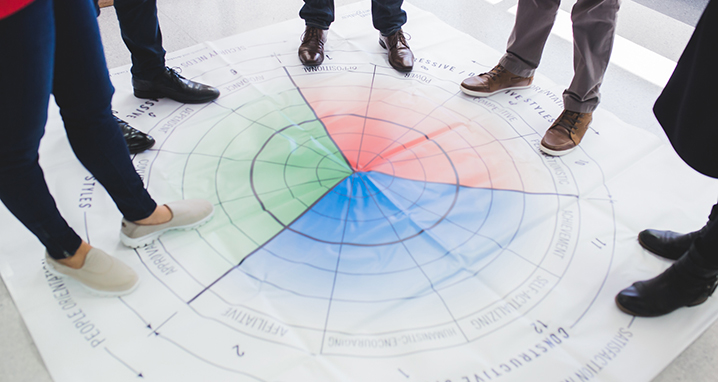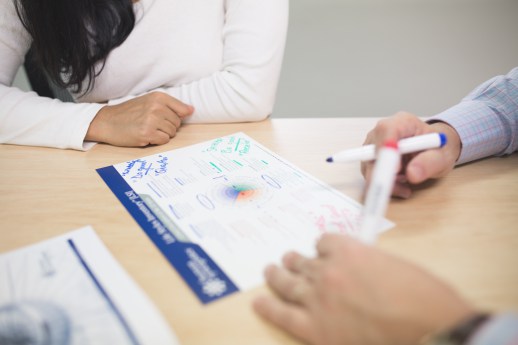I’m excited to share how I became an organizational culture consultant and what I have learned along the way.

“Experience” and “learning” are two powerful words that shape and strengthen personal and professional accountability, effectiveness, and success. These two words are close to my heart and mind. I firmly believe that they are of utmost importance in today’s VUCA world.1 The more we can experience and learn, the better we can adapt to and effectively influence current and future situations. The opportunity to learn and to gain experience represent two important reasons why I chose to become accredited as a culture consultant.
The above holds true for the consulting world, too. Every client project or contract serves as an experiential learning curve for business culture consultants, as each engagement hones the consulting growth mindset. Effective utilization of this mindset facilitates better client service and a successful workplace culture consulting engagement.
Learning is experience. Everything else is just information.
-Albert Einstein
I embarked on a culture consulting journey with my post-accreditation workshop project that focused on assessing organizational culture and effectiveness. The accreditation workshop was facilitated by Roxanne Ray, Director of Professional Services, and her team at Human Synergistics.
With the support of my mentor, Cathy Perme, and the determination to learn from my first consulting experience, I am writing this article. It serves a dual purpose: (1) to refresh my learning experience, and (2) to share my learning with fellow business culture consultants and contribute to their learning curve and growth mindset.
In hindsight, the lessons I learned from the Organizational Culture Inventory® (OCI®)/Organizational Effectiveness Inventory® (OEI) accreditation project are as follows.2
Note that as an inspiration for new consultants and a good reminder for experienced consultants, my suggestions are designed to be relevant not only to projects based on the OCI/OEI but also, when possible, to those based on other approaches to measuring organizational culture and climate.
Initial Discovery Consulting
The first phase is for consultants to conduct discovery meetings with clients and build a credible consulting engagement by following the below steps.
- Get initial buy-in from the senior leadership team, as it is critical for assessments and transformation success.
- Prior to conducting assessments, gain a holistic understanding of a client’s business/organizational needs, and the company’s goals and objectives. Upon understanding, consultants will need to identify and analyze how culture and effectiveness assessments can support the achievement of defined organizational needs and goals. The rationale needs to be explicitly mentioned to senior leadership and key stakeholders.
- Create trust with the team—emphasize and ensure action planning is initiated and set into motion to attain holistic completion of the assessment purpose and business/organizational needs.
Experience is a hard teacher because she gives the test first, the lesson afterward.
-Vernon Sanders Law
Assessments and Findings
Climate and culture assessments will be successful and produce change when conducted in a structured, phased approach as follows.
- Plan an agenda with the client and establish a timeline for each phase, including survey administration, debrief presentation, etc. If necessary, facilitate planning sessions, conduct regular follow-up, and adjust the timeline as and when required.
- Facilitate qualitative data collection (like interviews and focus groups) to supplement quantitative data collection (like surveys/assessments).
- Seek senior leadership input prior to designing the questions and agenda for the interviews and focus groups.
- Establish a set of ground rules prior to focus group sessions and the debrief of assessment results. Explain the purpose of the sessions to attendees before diving into the main agenda.
- Modify and/or tweak the template provided for the survey memo and scripts to make it more personalized for participants at the client end.
- During the two-week data collection process via surveys, update the client with ongoing survey results (once every 3-4 days) on the number or percentage of participants who completed the survey and how many more are needed to participate prior to the survey deadline date.
- Analyze the assessment report carefully and outline specific findings in a summary format for quick reference (for instance, current operating culture, ideal culture, best and worst five outcomes, top five levers for change) and share with the client.3

Report Debrief and Recommendations
The final and crucial phase is to present the assessment report findings to the client and outline the recommendations.
- Debrief survey results to the primary client coordinator or senior leader before presenting the results to the entire leadership team. Any changes requested should be accommodated in the final debrief presentation unless it compromises the integrity of the assessment.
- During the results debrief presentation, be sure to:
- Provide handouts of Circumplex results (Ideal and Current Operating Culture), How Culture Works model, Causal factors bar chart, Outcomes bar chart and one-page summary report to attendees.3
- Explain the How Culture Works model and define the Constructive, Passive/Defensive, and Aggressive/Defensive culture styles prior to debriefing assessment results.4
- During the results debrief, establish a connection between the quantitative and qualitative data to facilitate a meaningful understanding of results at the attendees’ end.
- After presenting the assessment results, ask attendees their thoughts about it. Facilitate group exercises and ask attendees to share their ideas on ways to attain change within the department and company. Make notes and share them with key stakeholders/leadership team.
- If subgroup results form a part of the main report, create a one-page summary report for each subgroup breakout and share with the client after the debrief presentation.
- Keep the assessment results report handy so that any questions (from attendees) on survey items and/or results charts can be immediately addressed.
- Share recommendations and discuss action plans with key stakeholders/leadership team.
- Help the leadership team share assessment results with the entire department and/or organization to facilitate and build an open and transparent communication culture.
- Establish a contract in advance with the client for post-assessment support, even if the support doesn’t include an entire intervention. This support should include helping the client get started on action plans and the implementation process.
“To be intentional is to act purposefully, with a goal in mind and a plan for accomplishing it.” -Ann Epstein
The specific lessons shared above can apply to both external and internal consultants. The more general lesson is that all organizational members, including Human Resource professionals and leaders, play a crucial role in fostering a constructive culture at the workplace–and they must be included in the change process..
Finally, building a healthy culture must be intentional and proactive instead of reactive. It is a daily process instead of a one-time effort. For instance, at Culturelligence, an Agile HR training consultancy I co-founded, we intentionally embarked on creating a psychologically safe, humanistic-encouraging, and affiliative environment where all members of our globally distributed team feel a sense of belonging, even though we are a 100% remote company.
Editor’s Note: This blog post has been updated for comprehensiveness.
References:
1 Stiehm, et al., (2002) VUCA. Retrieved from https://en.wikipedia.org/wiki/Volatility,_uncertainty,_complexity_and_ambiguity
2 Cooke, Robert A. & Szumal, Janet L. (2003). Organizational Culture Inventory®/Organizational Effectiveness Inventory® Feedback Report. Plymouth, MI: Human Synergistics.
3 The terminologies are from Robert A. Cooke, Ph.D. and J. Clayton Lafferty, Ph.D., Organizational Culture Inventory® and Organizational Effectiveness Inventory®, Human Synergistics International, Plymouth, MI. Copyright © 1987-2007. All Rights Reserved. Used by permission.
4 OCI® style names and descriptions are from Robert A. Cooke, Ph.D. and J. Clayton Lafferty, Ph.D., Organizational Culture Inventory®, Human Synergistics International, Plymouth, MI. Copyright © 1987-2007. All Rights Reserved. Used by permission.